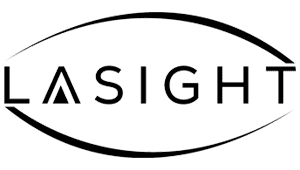Why Getting Cataract Surgery Means Reclaiming Your Independence

Millions of people have cataracts. The vision changes caused by age-related cataracts can make it challenging to engage in daily activities that you once did easily.
Driving, household chores, and socializing can be difficult when you have vision loss from cataracts. Undergoing a procedure on your eyes might cause anxiety, but cataract surgery is safe and effective, and most people recover quickly afterward.
Cataract surgery offers immediate correction of the vision problems caused by cataracts themselves, as well as correction for common refraction errors. Keep reading to discover why getting cataract surgery means reclaiming your confidence and independence!
What are Cataracts?
Cataracts occur when the proteins that make up the eye’s crystalline lens clump together and cause cloudy patches. The lens is a clear structure that helps focus light onto the retina.
When protein deposits build up on the lens, making it harder for light to reach the retina, this can disrupt vision and make it harder to see. Most cataracts are age-related, though cataracts can also be congenital or arise due to illness or injury.
Cataracts can be tiny at first and not affect your vision at all. However, they can get larger over time.
When this happens, you’ll notice changes to your vision, such as increased blurriness, difficulty seeing in low light, and colors seeming dimmer or duller. You may develop blank spots in your vision that negatively affect your ability to participate in everyday activities.
Common Symptoms of Cataracts
Vision is Cloudy or Blurry
 Cataracts block light from entering the eyes, which makes vision seem blurry, hazy, or out of focus. Your overall vision may seem dimmer or darker, even in full light. It may seem like you’re looking at the world through a foggy or dirty window when you have cataracts.
Cataracts block light from entering the eyes, which makes vision seem blurry, hazy, or out of focus. Your overall vision may seem dimmer or darker, even in full light. It may seem like you’re looking at the world through a foggy or dirty window when you have cataracts.
Colors Seem Dimmer
Cataracts can cause a brownish or yellowish tinge to the lens. This has the same effect as looking through a brown or yellow filter. Colors may seem duller, less vibrant, or hazy.
You Notice Glare or Halos Around Lights
Cataracts may increase glare or halos around lights, which may be particularly problematic when driving at night. You may see glare from oncoming traffic or street lights when driving later in the evening.
You Need Brighter Lighting
Since cataracts block light from reaching the retina, you’ll need brighter light to see well. You may struggle to see in places with low lights, like theaters or restaurants, and being outdoors at night can be stressful due to low vision.
Your Glasses No Longer Work as Well
As cataracts progress, you may have frequent vision changes and need frequent updates to your glasses or contact lenses prescription.
How Cataracts Affect Daily Life
The symptoms of cataracts can affect how you live your life. You might find that you are reluctant to leave the house because you’re worried about being able to see well enough to navigate different environments.
You might start spending less time with your friends and family because your vision is no longer good enough to join them in certain activities. This can lead to social isolation and increase the risk of depression or loneliness.
You may also worry that your vision will lead to accidents that could cause serious injury. Falls are a risk for people with reduced vision.

You may also be concerned about simple activities like cooking for fear that you might injure yourself with a kitchen knife or sustain burns. If cataracts limit your activities, steal your confidence and independence, and affect your safety, it’s time to ask your eye doctor about cataract surgery.
Cataract Surgery
During cataract surgery, your cataract surgeon will remove the natural lens affected by cataracts and replace it with a clear artificial lens called an intraocular lens (IOL).
Having cataract surgery helps you see clearly by completely removing any cloudiness. IOLs can also correct other vision problems, such as nearsightedness, farsightedness, and astigmatism.
Many people find that after cataract surgery, their vision is better than it was before having cataracts. Your cataract surgeon can tell you about your options for IOLs. There are several different varieties with different vision benefits, including:
Monofocal IOLs
Monofocal lenses are like single-vision glasses or contacts, correcting vision at one distance. Typically, people choose a monofocal IOL to correct distance vision.
You won’t need glasses to watch TV, but you may still need reading glasses for reading or computer work.
Toric IOLs
Toric lenses are specially designed IOLs that correct vision issues caused by astigmatism. Toric IOLs are only correct for distance vision, so you may still need to wear glasses for reading or other close-vision activities. We offer the Apthera IC-8 IOL for astigmatism.
Multifocal IOLs
Multifocal IOLs work similarly to multifocal glasses or contacts, offering vision correction at multiple distances. With multifocal IOLs, you’ll get clear vision at mid-range and far away, though you may still need reading glasses for close vision.
Extended Depth of Focus Vision

Extended depth of focus (EDOF) lenses are another type of IOL for correction at multiple distances. They have an elongated focal point and allow vision correction at all distances. We offer the Vivity® Extended Depth of Focus Lens.
Aspheric Monofocal
Aspheric IOLs are another option for monofocal correction. Their shape is slightly flatter around the periphery of the lens to reduce glare and increase sensitivity to contrast between light and dark. They offer better vision in low light, rain, fog, or snow than traditional monofocal lenses.
Whichever type of IOL you choose, cataract surgery offers an opportunity to regain clear vision, rebuild your confidence, and reclaim your independence. Dr. Moarefi will work with you to take back the life cataracts put on hold.
Are you ready to banish your cataracts? Take the next step by requesting a cataract consultation at LA Sight in Los Angeles, CA!
